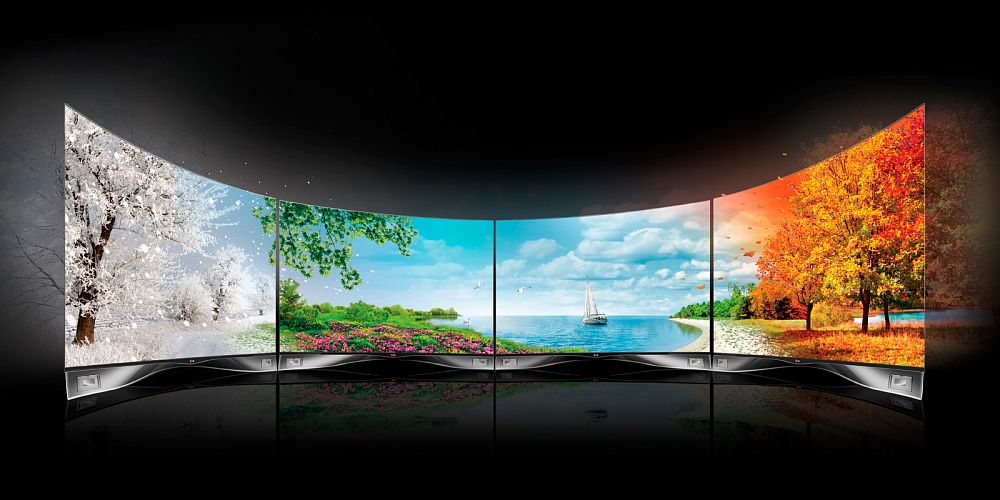
Seamless Video Wall: What is it? Key Features
A seamless video wall is a video wall that has no visible joints between the individual screens that make it up. Video walls with a joint size of 5 mm or less can be called “seamless”.
It is worth noting that there are no uniform standards for “seamlessness”. Whether a particular video wall is seamless depends on the image acquisition technology, the specific manufacturer, and even the product positioning on the market.
Application areas of seamless video walls
Seamless video walls are in demand where maximum image detail is required, and any design features that make it difficult to perceive information are unacceptable. Examples of such application areas are control rooms and situation centers, rapid response centers, etc. Seams and joints of video wall screens in such cases make it difficult to read maps, diagrams, functional diagrams, and other similar information. In addition, seamless video walls are in demand in TV studios, during concert events, in Digital Signage and advertising.
Are seamless video walls really seamless?
As noted above, there is no single generally accepted standard for the size of the seams. Some manufacturers call a video wall seamless already when the joint size between screens is 5 mm. For others, “seamlessness” begins with a frame size of 1 mm or even less. One way or another, it should be understood that true seamlessness of a video wall is achievable only when using certain technologies, such as LED screens or projectors, while any video wall based on LCD panels will still have seams, albeit small ones.
Technologies on which video walls are built
Video walls are built on the following technologies:
- LCD panels. Professional liquid crystal displays, combined into a single surface of the video wall. Due to the presence of a frame on each display, such a “seamless” video wall will actually have small seams. Their sizes depend on the manufacturer of LCD panels and on specific display models. Most often, the seam in such a video wall does not exceed one or two millimeters. The advantages of such a video wall implementation are the ability to continuously operate around the clock, stable and bright colors, easy maintenance, and the ability to create non-standard video wall configurations.
- Video projectors. A seamless, solid image can be created using a video projector. The image is projected onto the screen by one or more projectors working in concert. The video projector controller ensures that the image pieces formed by each projector are superimposed without seams or overlaps. It is characteristic that this method allows you to display a seamless image even on a projection screen of a complex shape, and not just a flat one. The disadvantage is common to all projectors – in daylight, the image on such a video wall is difficult to read.
- Projection modules. The technology is based on the coordinated operation of several independent video projection modules (video cubes), which jointly form an image on a single screen canvas. With a rear layout, video cubes allow you to completely get rid of seams on the video wall. The advantages of projection cubes are a non-fading image even in bright daylight and the ability to create video walls of up to hundreds of square meters. However, such a solution will cost the customer significantly more. In addition, projection screens have a number of disadvantages that limit the scope of their application: relatively large dimensions, uneven burnout of projection lamps and overheating.
- LED screens. The image on such a screen is formed by individual LED pixels. The LED screen is assembled from many finished LED modules (cabinets) containing a certain number of LEDs. The finished LED video wall will be completely seamless. In addition, LEDs allow you to implement not only a flat video wall, but also more complex geometry. The disadvantages of the technology include a relatively low screen resolution, which limits the use of LED video walls mainly to advertising and Digital Signage.






